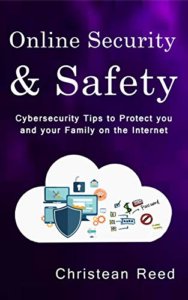

We sat down with him to discuss why he wrote the book and how it can help the average person, day to day, to protect themselves against potential online security threats.
Online Security and Safety: Cybersecurity Tips to Protect you and your Family on the Internet by Christean Reed is available for purchase on Amazon. Below is an excerpt from Chapter 1.
Chapter 1 – Passwords
Just about everything you do today has an online component that requires login credentials to protect your private and personal information. You need to take the creation and management of your passwords seriously. There are automated processes that scan websites on the internet trying to guess your password or checking to see if you are using an ID and password that was captured from another website that was compromised. Every day we hear about another website or service that was hacked. When that happens, the hackers gain access to personal information that was on that site and can then sell it to others.
Here is a simple example:
You signed up with a website to get free recipes, you provided your email address and the password Baxter101. At another time you signed up for a completely different site but used a similar password Baxter102. The hacker gets hold of your 1st password and then sets up an automated process to try that password and similar passwords on thousands of different sites. If they can login, that information is saved and later sold to someone else. Why would a hacker want your information? They really don’t care they are just trying to collect information so they can sell it to someone else that might find that information valuable.
Unique Passwords
If you are using the same password for more than one site, you need to stop that immediately and go back through your sites and set up a unique password for each one. I know it can be challenging to maintain all your passwords. I have included a few best practices at the end of this chapter to make this process easier.
Strong Passwords
A strong password is harder for a computer to guess. Passwords should be at least 8 characters in length consisting of upper and lower case, special and numeric characters. If you don’t want to come up with your own passwords, you can use a password generator like this one.
If you want to use passwords you can remember, you can create passwords using a combination of words and letters that mean something to you.
Example: Ilike2Run!
- More than 8 characters
- Includes both upper- and lower-case letters
- Contains a special character and a number
- Easy to remember
Changing Passwords
You should change your passwords at least for high risk sites like banks, insurance, healthcare, etc. regularly. Every 90 days would be fantastic but even once a year is a start.
Password Managers
There are several ways you can manage your passwords. Here are a few that I recommend.
- Use a password manager such as Dashlane, LastPass or 1Password.
- Write them down in a notebook. Not the safest method but if you don’t spend much time on the road and you are not comfortable using a software-based manager, paper is always an option.
- Buy two USB drives with security software installed that will encrypt and protect the contents. You can then store your password file on each of the drive in a text file, Word document or Excel spreadsheet. Make one your master and one your backup. Only make changes to the master version and then copy it to your backup drive at least once a month. Sandisk is a solid USB drive manufacturer, you can usually get two drives for about $20.00. Here is a link you can use.
Single Sign-On
Many sites will let you register with your Facebook or Google credentials. When you do this, that other site does not get access to your Facebook or Google credentials as it just runs a validation script to log you in. This is a simple solution that will allow you to minimize the use of multiple passwords but there is a risk. If the primary site (Facebook, Google) is compromised then all the sites you are accessing with this login may be at risk.
You need to be careful when you choose this option, some sites will ask if it’s ok to access your contacts from your primary site which is not a good idea.
Action List
- Decide on how you will securely store your passwords going forward.
- If you used any passwords for more than one site, go back immediately and change to unique passwords on each site.
- Go through your password list, if any are easy to guess or single word passwords, go back and change them to a strong password.
Change your passwords for any high-risk sites (Financial, Insurance, Health).